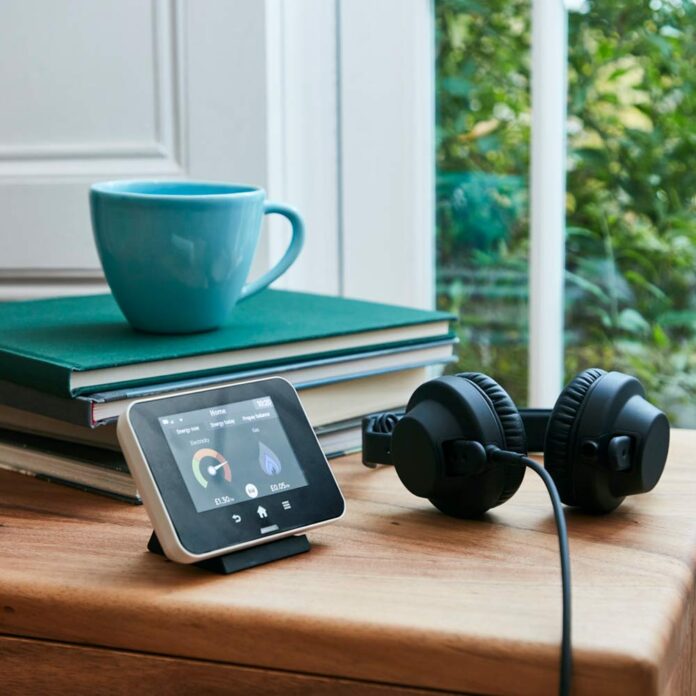[ad_1]
Being more aware of just how much energy we’re using in our homes can be extremely handy. With the prices of energy rocketing and an unprecedented number of energy providers stopping trading in 2021, a smart meter could be the answer. But are smart meters compulsory? We ask the experts to explain the latest of having a smart meter in your home.
Smart meter installation explained
A smart meter will replace an existing gas and electricity meter and keep track of your usage, sending the data straight to your energy supplier. It means you no longer have to submit meter readings.
The devices come with a display that lets you see a visible representation of just how much energy you’re using. This may be helpful when it comes to working out why your utility bills are higher than expected.

Image credit: SmartEnergyGB
Chances are your energy supplier has been in touch about installation. In fact, they might be repeatedly asking to fit a smart meter in your home. That’s because the Government has set supplier’s targets, which come into force in January 2022. The targets will cover the number of installations each year to hit the 2025 deadline for all homes to have a smart meter. So do you have to have a smart meter fitted? Here’s everything you need to know.
Are smart meters mandatory?
Well actually, no. If you don’t want to have a smart meter installed, you can decline. However, according to Gareth Kloet, energy spokesman at GoCompare, if you don’t want a meter, it’s still good practice to read your gas and electricity meters regularly. This is because passing them on to your energy supplier means they can bill you accurately and adjust regular monthly payments so that you don’t build up debt or large credits.
‘At this time of year, most customers will be using more energy than in the summer months so it’s important to have a good idea of how much you are using so that you can budget appropriately. Your energy supplier will help you do this if you need to come to an alternate payment arrangement,’ adds Kloet.
Smart meter benefits
Smart meters can make your life easier. The main reason is you don’t need to worry about regularly updating your energy provider with your usage figures. They also ensure a more accurate bill – so no more paying over the top because your supplier has estimated your energy usage. The display also shows the cost of the energy you’re using, as well as how much, which may help you identify where you’re wasting energy – for example by running the dishwasher half full.

Image credit: Ebay
How to install a smart meter
If your energy supplier has yet to contact you about a smart meter and you want one, you can actually request it. How long installation will take depends upon your provider, although the major providers usually take between two and four weeks to complete installation. Smaller providers may take longer.
It’s simple too – the not-for-profit company leading the smart meter rollout, SmartEnergyGB, has a dedicated request page that lets you enter your energy provider, and will then take you straight to their smart meter request webpage. You can also call 0300 131 8000 to request a smart meter instead.
The device can be installed in rented accommodation as well as homes that are owned. Whoever pays the bill, has the right to request a smart meter. However, according to Ofgem, you should inform your landlord in case having something installed without their permission is a breach of contract.
It’s also important to note that smart meters are free and you won’t need to pay for installation.

Image credit: Worcester Bosch
Can I switch energy providers with a smart meter?
You may have heard that having one means you can’t switch providers. However, that’s not completely true.
The first iteration of smart meters, known as SMETS1 meters, first appeared in 2015. They did stop sending data if you switched suppliers, so it was up to you to provide meter readings to your new energy provider. However, this isn’t the case for the newer SMETS2 meters, introduced in 2018. Energy providers have been required by Ofgem to install SMETS2 models for some time now. So, if you opt to have a new device installed, this is the version you should get.
For those that already have a SMETS1 smart meter installed, a software update is rolling out. The revise will add the same features and functions as SMETS2 models – including the ability to continue sending meter readings if you switch suppliers. The update has already begun and, according to SmartEnergyGB, should be completed in 2022.
The post Do I have to have a smart meter fitted? appeared first on Ideal Home.
[ad_2]
www.idealhome.co.uk










